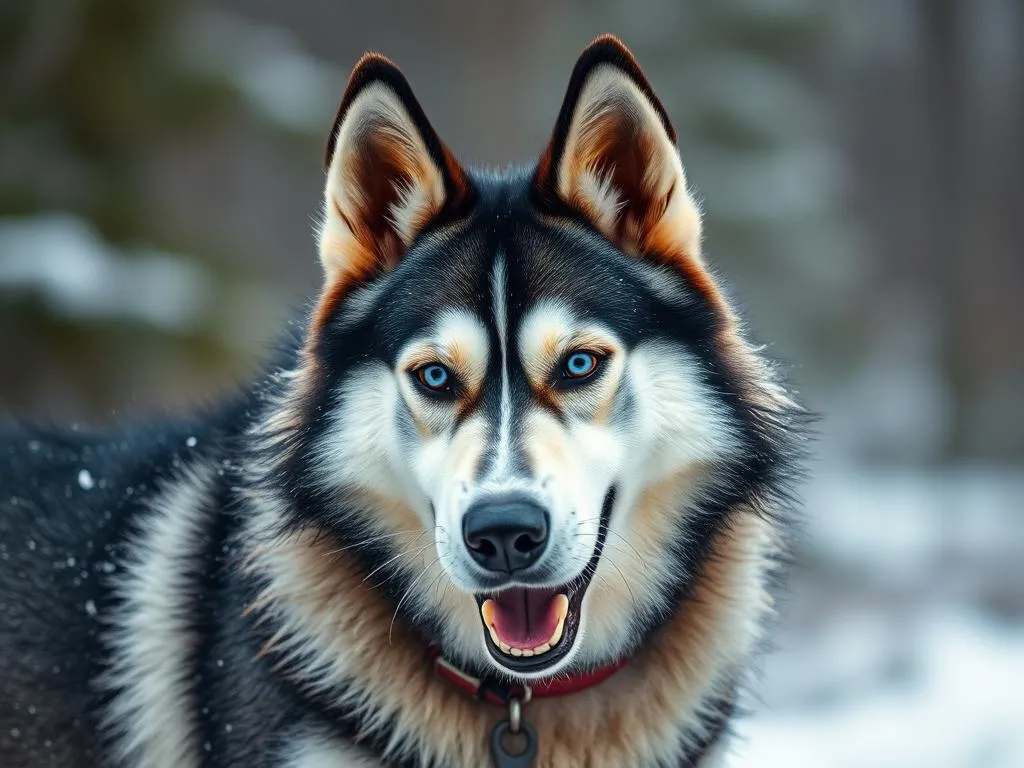
Understanding the temperament and behavior of different dog breeds is crucial, especially when it comes to popular breeds like the Siberian Husky. Known for their striking appearance and energetic personality, Huskies are often surrounded by misconceptions regarding their behavior. Many potential owners ponder, are Huskies dangerous? To answer this question, we must explore various aspects of their temperament, training, and socialization.
Understanding the Siberian Husky Breed
History and Origin
The Siberian Husky is a breed that has its roots deeply embedded in the history of the Arctic region. Originally bred by the Chukchi people of Siberia, these dogs were utilized as working dogs, primarily for sledding and herding. Their endurance and strength made them ideal for pulling sleds over long distances in harsh conditions. Over time, they also became beloved companions, known for their friendly disposition and loyalty.
Physical Characteristics
Huskies are medium-sized dogs, typically weighing between 35 to 60 pounds, with males being larger than females. They have a dense double coat that can come in various colors and patterns, alongside striking blue or multi-colored eyes. Their unique features include erect triangular ears and a bushy tail that curls over their back.
In terms of energy levels, Huskies are incredibly active and require a substantial amount of exercise. Daily walks, playtime, and mental stimulation are essential to keep them physically and mentally healthy.
Temperament of Huskies
General Personality Traits
Siberian Huskies are often described as playful, energetic, and friendly. They have a zest for life and tend to be very social, enjoying the company of their human families and other pets. Their playful nature can sometimes come off as mischievous, leading to behaviors like digging or escaping if they become bored.
Social Nature
Huskies thrive on social interaction. They are known to be good with children and can bond well with other dogs when socialized properly from a young age. Early exposure to various people, environments, and other animals can help cultivate a well-rounded temperament, reducing the chances of behavioral issues later on.
Aggression Potential
When considering whether Huskies are dangerous, it’s important to discuss their potential for aggression. Generally, Huskies are not known to be aggressive dogs. However, like any breed, they can show aggression if they feel threatened or are not properly socialized. Factors such as genetics, environment, and training play significant roles in determining a dog’s behavior. Comparatively, Huskies are less prone to aggression than some other breeds, but responsible ownership is key to ensuring a well-adjusted pet.
Factors Influencing Behavior
Training and Obedience
Training is a crucial aspect of owning a Husky. These dogs are intelligent and can learn commands quickly, but they are also known for their stubbornness. Consistent training using positive reinforcement techniques can help instill good behavior. Effective training involves patience, persistence, and understanding the individual dog’s personality.
Socialization
Early socialization can prevent many behavioral issues. Exposing a Husky to different environments, people, and other animals while they are still puppies is vital. Activities like puppy classes, playdates, and visits to dog parks can enhance their social skills and confidence.
Environment and Lifestyle
The environment in which a Husky is raised greatly influences its behavior. Huskies thrive in active households where they can receive plenty of exercise and mental stimulation. Urban living can pose challenges, as they may have limited space to roam and expend energy. Conversely, a rural setting with ample outdoor space can be ideal for their energetic nature.
Common Misconceptions About Huskies
Huskies are Naturally Aggressive
One prevalent myth is that Huskies are dangerous or naturally aggressive. This misconception often arises from their strong personalities and vocal nature. In reality, Huskies are typically friendly and sociable. If they are aggressive, it is usually due to poor training, lack of socialization, or fear.
Huskies Can’t be Trained
Another myth is that Huskies are untrainable. While they can be challenging due to their independent nature, they are certainly trainable with the right approach. Using consistent and positive training methods can yield successful results. Engaging training activities can also keep them mentally stimulated, which is crucial for this breed.
Huskies are Dangerous with Children
Some believe that Huskies are dangerous to children. On the contrary, many Huskies are known to be gentle and affectionate with kids. However, supervision is always necessary, especially with younger children, as a Husky’s exuberance can sometimes be overwhelming.
When Huskies May Become Dangerous
Signs of Aggression
Understanding a Husky’s body language is essential for recognizing signs of aggression. Some warning signs include growling, baring teeth, and stiff body posture. If a Husky is showing these signs, it is crucial to remove them from the situation and assess what may be causing the stress.
Situations That Could Trigger Aggression
Certain stressful situations can trigger aggression in Huskies. These may include unfamiliar environments, loud noises, or confrontations with other animals. Awareness of these triggers can help owners manage their dogs more effectively and prevent potentially dangerous situations.
The Role of Poor Ownership
Poor ownership can lead to dangerous behavior in any dog breed, including Huskies. Lack of training, socialization, and adequate exercise can contribute to behavioral issues. A neglected or poorly trained Husky may exhibit aggression or anxiety, reinforcing the stereotype that they are dangerous.
Responsible Husky Ownership
Choosing the Right Owner
An ideal Husky owner should be active, patient, and knowledgeable about dog training and behavior. They must be committed to providing a structured environment that includes regular exercise and mental stimulation. Those who can dedicate time and effort to their Husky’s upbringing will likely enjoy a rewarding relationship.
Commitment to Training and Care
Ongoing training and behavior management are crucial for Huskies. Regular obedience training, participation in dog sports, and engaging activities can help channel their energy positively. Maintaining a consistent routine is vital for a Husky’s well-being.
Community Resources
Engaging with community resources such as trainers, veterinarians, and dog groups can provide valuable support for Husky owners. These resources can help owners stay informed about best practices and provide social opportunities for their dogs.
Conclusion
In summary, the question of whether Huskies are dangerous hinges on understanding their behavior and the influence of responsible ownership. While they are generally friendly and sociable dogs, factors such as training, socialization, and environment play critical roles in their temperament. By committing to proper training and care, potential Husky owners can ensure a safe and harmonious relationship with their furry companions.
FAQs
Are Huskies good with kids?
Yes, most Huskies are friendly and gentle with children. Supervision is essential to ensure safe interactions, especially with younger kids.
How can I prevent my Husky from being aggressive?
Early socialization, consistent training, and understanding your Husky’s triggers can significantly reduce the risk of aggressive behavior.
What are the best training practices for Huskies?
Positive reinforcement techniques, consistency, and engaging training activities tailored to their energetic nature are effective methods for training Huskies.









